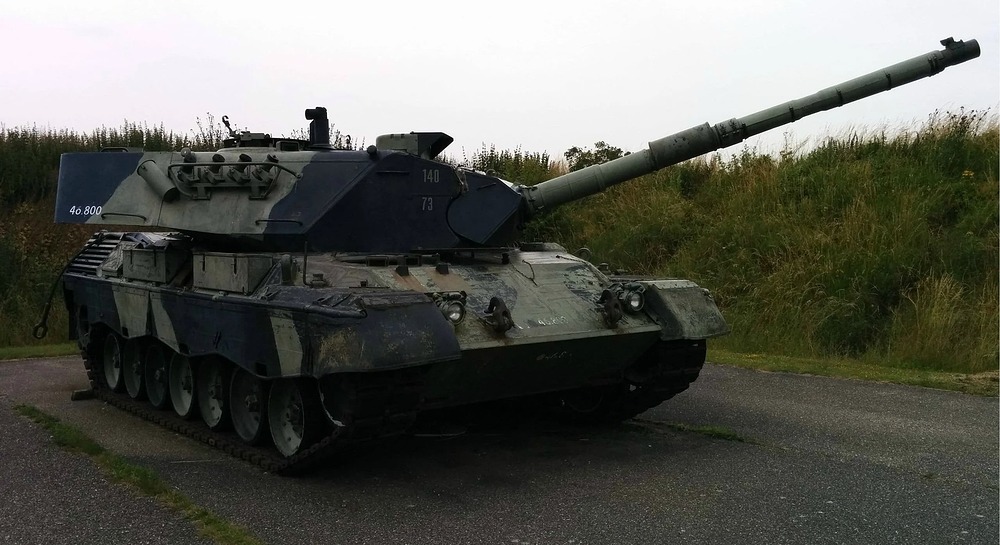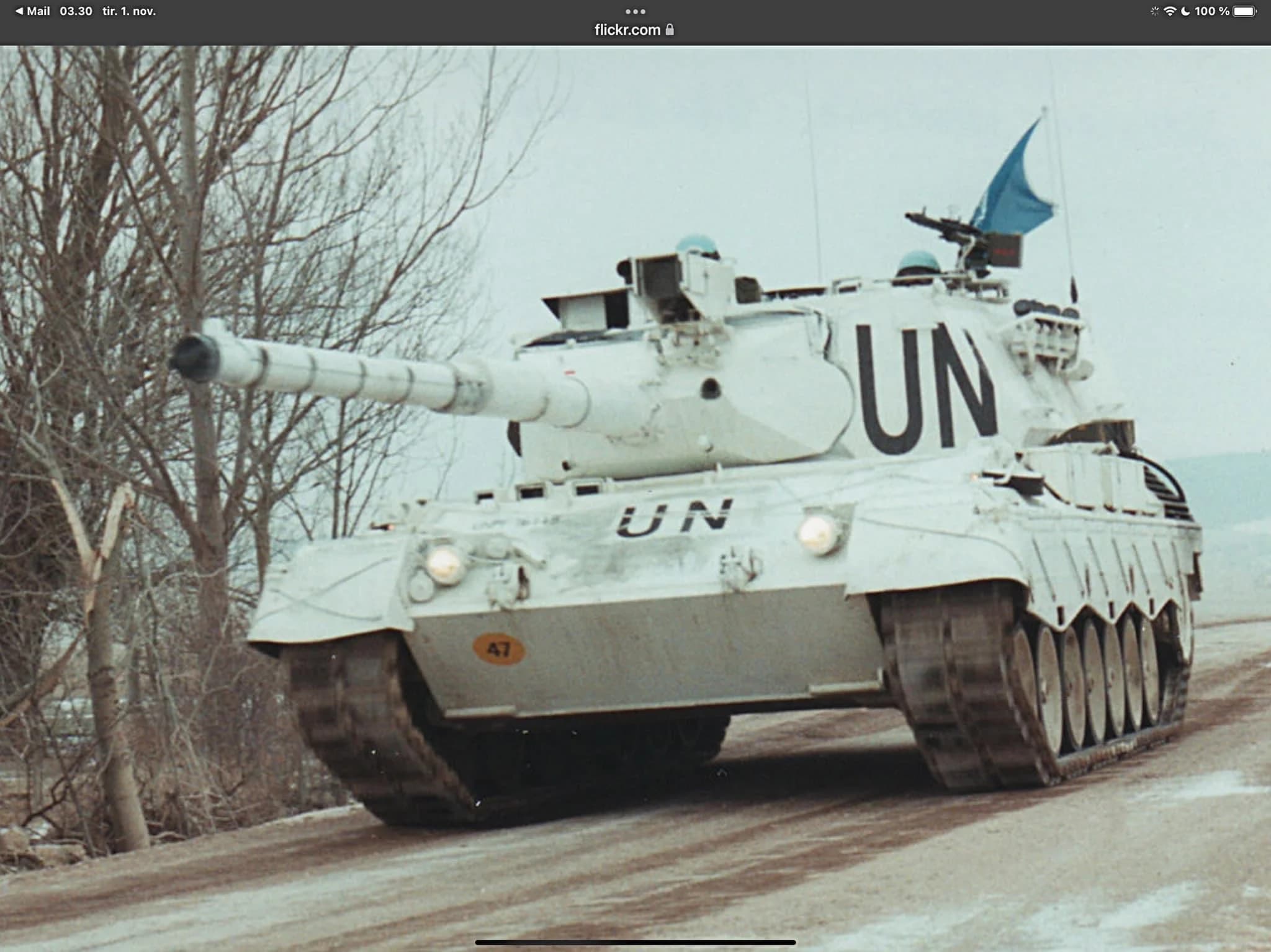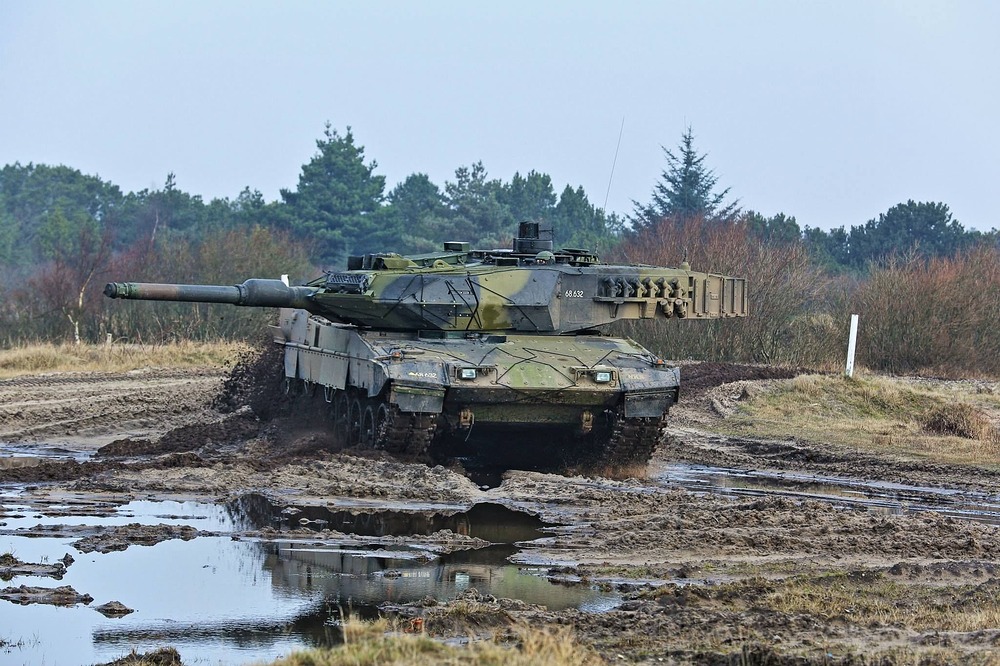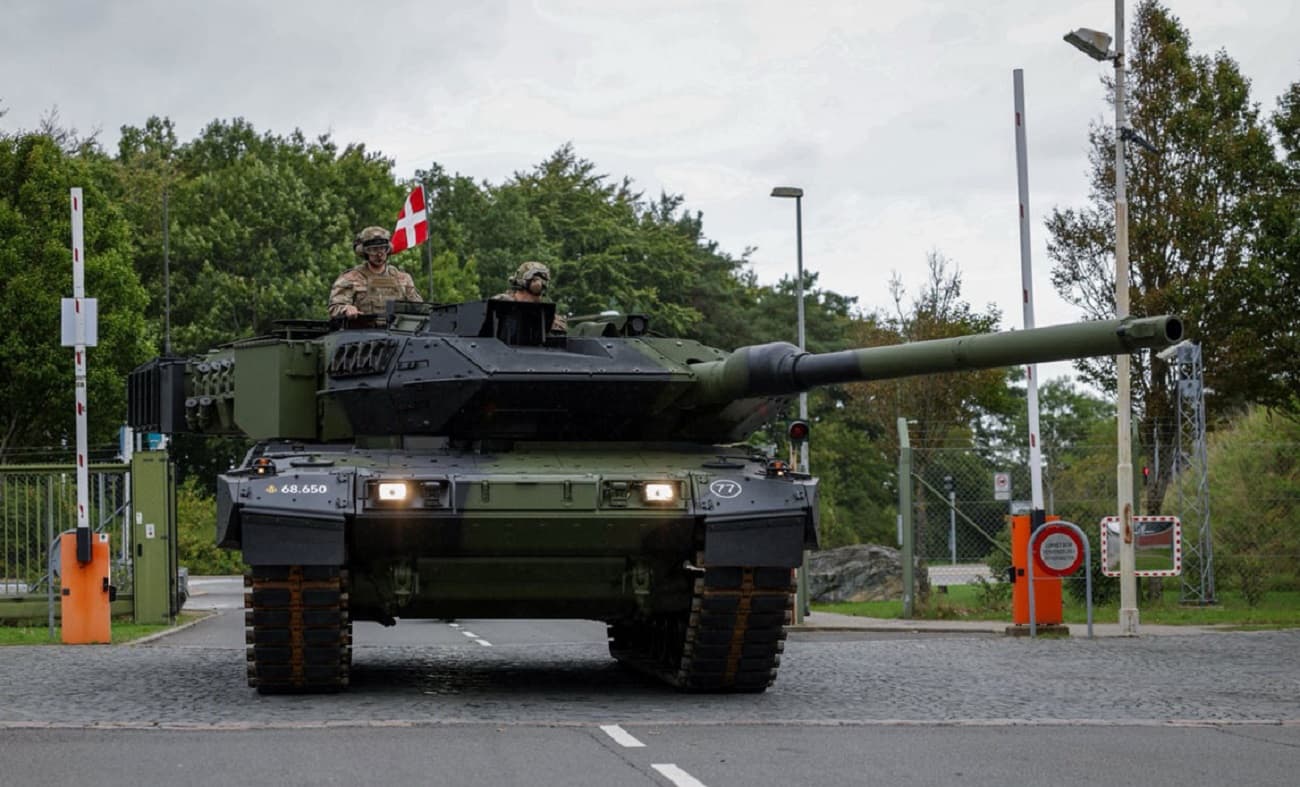When talking about adding Danish tanks to War Thunder, the only logical place for them is as a sub tech tree under Sweden. Denmark’s military is small but modern, and their tank fleet basically consists of German Leopard 2 variants — the same tanks Sweden uses, just slightly different versions and upgrades. Denmark doesn’t have its own tank production or unique designs, so creating a standalone Danish tree just wouldn’t make sense or have enough depth to keep players interested.
Denmark and Sweden share close military ties and cooperate heavily within NATO and Nordic defense frameworks. Their operational doctrines and hardware are similar, which makes the Swedish tech tree a natural home for Danish vehicles. Swedish tanks already showcase Nordic adaptations of German tech, so adding Danish Leopard 2s as a sub branch fits perfectly into that context without bloating the game with too many minimal trees.
From a gameplay perspective, a Danish sub tech tree under Sweden would allow War Thunder to include the Danish Leopard 2A5 and 2A7 with appropriate performance tweaks and skins, giving players a fresh but coherent experience. Trying to separate Denmark out on its own would lead to a weak, shallow tree with too few vehicles, making it an uninspiring grind.
In short, Danish tanks are a subset of Swedish and German tech, and the regional and historical reality backs this up. If War Thunder wants to do Danish armor right, they put it under Sweden, no questions
asked.
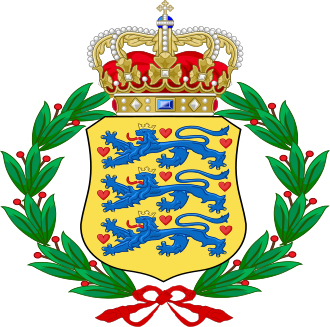
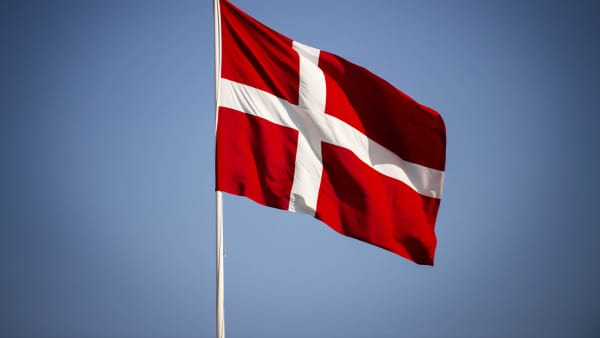
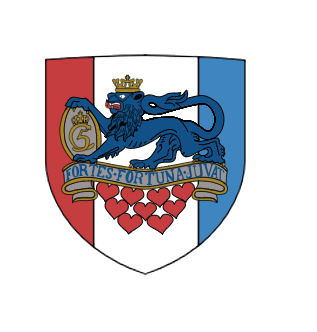
the logo
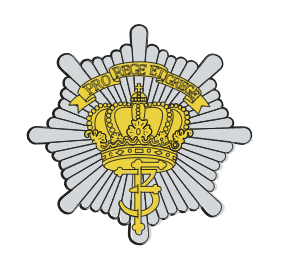
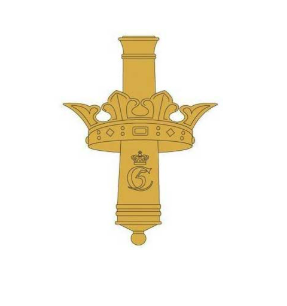
- M24 Chaffee (Light Tank): Denmark used these post-WWII, starting in the late 1940s. These were American light tanks, not Danish-made, but they were Denmark’s first modern tanks after WWII.
- Centurion (Main Battle Tank): Denmark bought Centurions from the UK in the 1950s. They were the backbone of Denmark’s armored forces for decades, upgraded several times. Not Danish-made, but heavily used by Denmark.
- Leopard 1: Denmark acquired the German Leopard 1 main battle tank during the 1960s and 70s. This was a big step forward — a reliable and modern tank at the time. Again, German design, but operated and upgraded by Denmark.
- Leopard 2: Starting from the late 2000s, Denmark transitioned to the Leopard 2 series. They have the Leopard 2A5 and recently upgraded to the Leopard 2A7. These are German tanks, but currently the core of Denmark’s armored capabilities.

MBT´S of denmark´s army
Danish Centurion Mk III — The Cold War Main Battle Tank

Denmark acquired the Centurion Mk III tanks in the mid-1950s as part of its post-WWII military modernization. These tanks were British-built, armed with the reliable and powerful 20-pounder (84 mm) L7 gun — a serious upgrade from the original Centurion Mk I’s 17-pounder.
Armament:
The 20-pounder gun was known for excellent armor penetration and accuracy, capable of engaging Soviet tanks like the T-54/T-55 effectively. Denmark’s Centurions used this standard British weapon without modification to the main gun.
Armor:
The Mk III featured improved turret armor compared to earlier variants, with frontal thickness of approximately 152 mm, and angled armor plates to better deflect incoming rounds. Denmark also implemented upgrades over time to improve survivability against evolving threats.
Engine and Mobility:
The Centurion Mk III was powered by a Rolls-Royce Meteor V12 petrol engine delivering around 650 horsepower. This provided a top speed on roads of roughly 35 km/h (22 mph), balancing mobility with the tank’s weight (~50 tons).
Fire Control and Optics:
Upgrades made during Danish service included improved fire control systems and stereoscopic rangefinders for better accuracy, as well as stabilized sights to enable firing on the move. Communications gear was also modernized to meet NATO standards.
Service History:
Denmark operated these tanks from the mid-1950s through the 1980s, after which they were replaced by Leopard 1 tanks. The Centurion Mk III was the backbone of the Danish armored forces during this period and underwent various maintenance and upgrade programs to extend its operational life.
Next to the mk v
Danish Centurion Mk V – A Modernized Cold War Workhorse
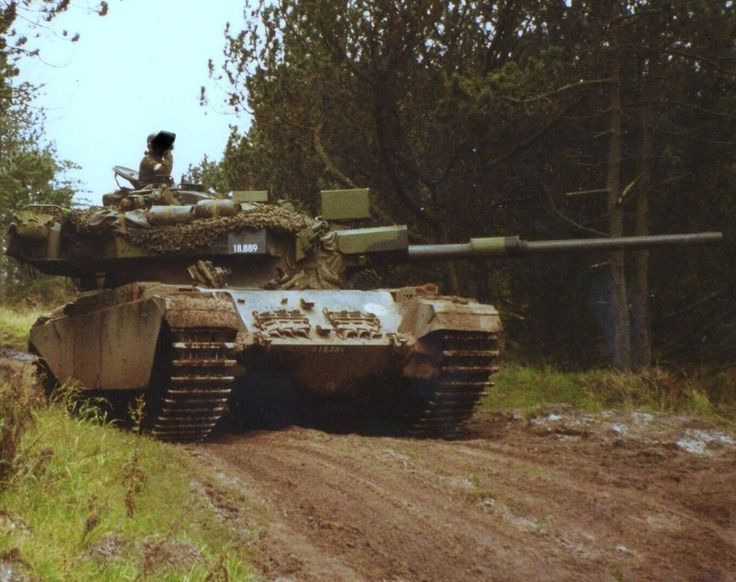
Following their use of the Centurion Mk III, Denmark acquired the Centurion Mk V to strengthen its armored forces in the 1960s and 1970s. This version was a refinement of the earlier Centurions, focusing on better reliability, maintainability, and battlefield effectiveness.
Armament:
The Danish Centurion Mk V retained the 20-pounder (84 mm) gun, one of the most respected tank guns of the early Cold War. It featured improved gun mounting and recoil systems compared to the Mk III, offering better long-term reliability. Danish forces used the standard British version of the gun without modification, but they integrated improved ammunition and fire discipline training through NATO doctrine.
Armor:
Armor was mostly unchanged in layout from the Mk III but included manufacturing improvements like better weld quality and a stronger gun mantlet. The turret front remained around 152 mm thick, giving solid protection against most threats of the time. Some Danish upgrades focused on improving resistance to HEAT warheads, including minor turret enhancements.
Fire Control and Optics:
The Centurion Mk V included upgraded optics and rangefinding systems over the Mk III. Denmark further modernized these systems during the 1970s, adding night-sighting equipment, more reliable rangefinders, and standardized NATO-compatible radio systems. These changes greatly improved command-and-control and target acquisition.
Mobility and Engine:
Still powered by the Rolls-Royce Meteor V12 petrol engine (650 hp), the Centurion Mk V maintained a top speed of approximately 35 km/h on roads. However, Denmark benefited from the improved Merritt-Brown gearbox, which gave smoother gear shifting and easier maintenance compared to earlier marks.
Service in Denmark:
Denmark introduced the Centurion Mk V during the 1960s. It served alongside the Mk III, gradually becoming the more dominant model due to its mechanical improvements. By the late 1970s, the Mk V received fire control and comms upgrades, extending its viability until the Leopard 1 replaced it in the 1980s. These tanks were fielded primarily by Danish armored battalions and trained under NATO tactical doctrine, ensuring they were always aligned with allied operational standards.
next the the Danish Leopard 1A3DK
Leopard 1A3 — Denmark’s Cold War Modernization MBT
After retiring most of its Centurion tanks in the 1970s, Denmark began modernizing its armored forces with the German-made Leopard 1A3, which became the main battle tank of the Danish Army from the late 1970s onward. These tanks brought a major step up in firepower, fire control, and mobility.
Origin and Procurement
Denmark purchased 120 Leopard 1A3s from West Germany between 1976 and 1978. The vehicles came from Bundeswehr stocks but were full-standard 1A3 models, not export-simplified versions. They were deployed in Denmark’s armored battalions, mainly within Jutland.
Armament
- Main gun: Rheinmetall 105 mm L7A3 rifled cannon
This was NATO standard at the time — a highly accurate and powerful gun capable of firing a wide range of ammunition types, including APDS, HESH, HEAT, and later APFSDS. - Coaxial machine gun: 7.62 mm MG3
- Commander’s MG: 7.62 mm MG3 on pintle mount (on selected vehicles)
The gun was stabilized and connected to a new fire control system for faster, more accurate first-round hits.
Armor
The Leopard 1A3 introduced the new welded steel turret, which replaced the earlier cast turret used on 1A1 and 1A2.
- Turret front thickness: approximately 70 mm
- Hull front: approximately 60 mm
- Side and rear armor was lighter, designed with mobility in mind
Denmark did not add applique or spaced armor to these tanks during their initial service years.
Fire Control and Optics
- Equipped with a laser rangefinder and advanced optics for both the gunner and commander.
- Early models had infrared night vision via searchlights; Denmark began upgrading to passive night sights in the 1980s.
- Danish Leopard 1A3s were equipped with NATO-standard Danish communication systems and internal radio upgrades.
Engine and Mobility
- Engine: MTU MB 838 CaM 500, 10-cylinder multi-fuel
- Horsepower: 830 hp
- Top speed: ~65 km/h
- Range: ~500 km on road
- Weight: ~42.5 tons
The Leopard 1 was known for excellent cross-country performance and fast acceleration, which fit well with Denmark’s need for rapid response across mixed terrain.
Danish Modifications
While the Leopard 1A3s delivered to Denmark were nearly identical to German models, Denmark made some important national adjustments:
- Winterization upgrades for Danish climate
- Heater and ventilation systems adjusted for cold conditions
- Modified internal stowage to suit Danish crew layouts
- National radio systems replaced the German sets to ensure integration with Danish command structures and NATO partners
Service Life
The Leopard 1A3 served from 1976 until the early 1990s in its original form. It was gradually replaced by the Leopard 1A5-DK, which was not newly purchased but rather upgraded from the existing 1A3 fleet. The conversion program ran from 1992 to 1994, and the A5-DK version remained in service until the early 2000s.
next to the Danish leopard 1A5 DK
Leopard 1A5-DK – Denmark’s Final Leopard 1
The Leopard 1A5-DK was Denmark’s final and most advanced version of the Leopard 1. Instead of buying entirely new tanks, the Danish Army upgraded their existing Leopard 1A3 fleet between 1992 and 1994. Around 120 tanks went through the program, which focused on modernizing the firepower, targeting systems, and electronic systems to bring the tanks up to late Cold War standards.
The 1A5-DK kept the 105 mm L7A3 rifled main gun, but it was now paired with a fully digital fire control system, specifically the EMES 18. This system included laser rangefinding, thermal imaging, and stabilization, allowing the tank to accurately fire on the move and during night or poor weather. This gave the upgraded tanks much greater accuracy and lethality, especially when using modern APFSDS ammunition.
Externally, the tanks looked very similar to the earlier 1A3s, but some vehicles received additional spaced armor modules on the turret front and sides, similar to the German Leopard 1A5s. Side skirts were fitted to improve protection against mud and fragments. However, there was still no composite or reactive armor, so protection remained limited compared to newer MBTs.
The mobility system stayed mostly the same. The MTU MB 838 CaM 500 engine produced 830 horsepower, giving the tank a top speed of around 65 km/h and good cross-country performance. Denmark focused on reliability, not raw upgrades in mobility.
Internally, the tanks received Danish-standard radios and communication systems, improved intercoms, and updated NBC (nuclear, biological, chemical) protection. The crew optics and interior layout were also refined for Danish needs. Winter readiness was maintained through upgraded heating systems, cold-weather lubricants, and modern batteries.
The Leopard 1A5-DK served as Denmark’s main battle tank throughout the 1990s and into the early 2000s. It was never deployed in combat, but was a key part of NATO readiness and training. The type was finally phased out between 2001 and 2005, as Denmark replaced them with the far more modern Leopard 2A5DK.
Today, a few Leopard 1A5-DK tanks are preserved in Danish museums like Tøjhusmuseet. The upgrade gave Denmark an affordable, capable MBT during a time of transition, and helped maintain NATO combat standards without the immediate need for a new tank purchase.
now the Danish newer Leopard 2
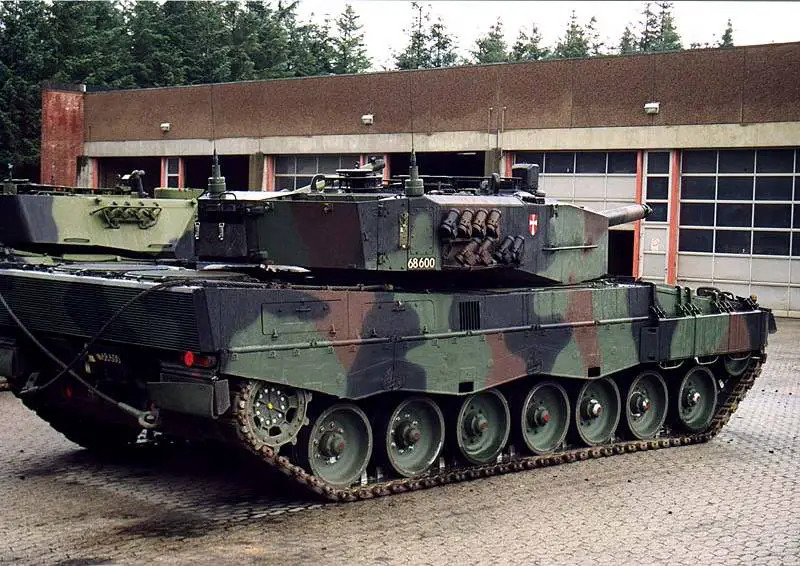
DANISH FIRST LEOPARD 2 MBT
Leopard 2A4DK: Denmark’s First Leap into Modern MBTs
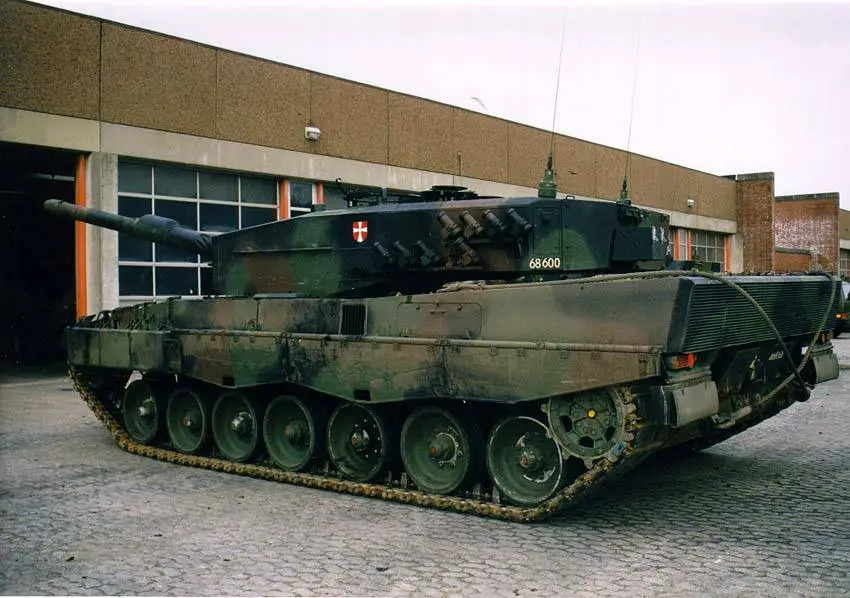
The Leopard 2A4DK marked Denmark’s first full transition from the Leopard 1 series to a modern third-generation main battle tank. Acquired in the late 1980s and early 1990s, the 2A4DK was a critical step for the Danish Army to keep pace with NATO armored forces during the late Cold War and post-Cold War period.
Denmark bought a total of approximately 77 Leopard 2A4 tanks from Germany. These tanks were essentially standard Leopard 2A4s but modified for Danish operational needs and climatic conditions. Hence, the designation 2A4DK.
Key features of the Leopard 2A4DK included:
- Firepower: Equipped with the Rheinmetall 120 mm L/44 smoothbore cannon, capable of firing a wide range of NATO-standard ammunition including APFSDS, HEAT, and smoke rounds. This gun gave a significant increase in armor penetration and effective range compared to the older 105 mm guns of Leopard 1.
- Fire Control System: While based on the Leopard 2A4’s baseline, the Danish version received localized upgrades to the fire control electronics and targeting optics, improving accuracy and target acquisition. However, it lacked the more advanced thermal sights and ballistic computers that appeared on later 2A5 models.
- Armor and Protection: The 2A4DK featured the Leopard 2A4’s advanced composite armor with spaced multilayer protection on turret and hull. This provided strong defense against both kinetic energy penetrators and shaped charge warheads. The tank also included improved mine protection measures and NBC (Nuclear, Biological, Chemical) protection systems.
- Mobility: Powered by the proven MTU MB 873 Ka-501 V12 diesel engine producing 1,500 hp, the tank could reach speeds up to 68 km/h on road and offered excellent cross-country mobility suited for Danish terrain, including forests, marshes, and snow.
- Crew and Ergonomics: The 2A4DK incorporated enhancements to crew comfort and survivability, including improved seating, better climate control for the cold Danish winters, and upgraded communication systems compatible with NATO standards.
- Winterization: Given Denmark’s climate, the 2A4DKs were outfitted with winter kits such as engine pre-heaters, insulated fuel systems, and track modifications to ensure operational readiness during harsh weather.
Operationally, the Leopard 2A4DK served as Denmark’s frontline MBT throughout the 1990s and early 2000s. The tank participated in numerous NATO exercises and was the backbone of Danish armored units until the arrival of the more advanced Leopard 2A5DK.
The 2A4DK was never deployed in combat by Denmark but was integral in maintaining Denmark’s armored deterrence during the end of the Cold War and in the uncertain post-Cold War era. In the early 2000s, the fleet began to be replaced by the Leopard 2A5DK to maintain technological and tactical superiority
now the the Danish LEOPARD 2A5dk
Leopard 2A5DK: Denmark’s Modern Main Battle Tank – Power, Protection, and Proven Performance
The Leopard 2A5DK is the Danish Army’s current main battle tank, introduced in the early 2000s as a replacement for the aging Leopard 1A5-DK. Unlike earlier models, the 2A5DK wasn’t a domestic rebuild — it was a direct purchase of German Leopard 2A5s, with several custom modifications to meet Danish operational requirements, especially for international deployment, joint NATO operations, and Arctic conditions.
In 2000, Denmark acquired 57 used Leopard 2A5s from Germany. These came from former Bundeswehr stocks but were upgraded and modernized before entering Danish service. The tanks were delivered from 2001 to 2004, replacing all remaining Leopard 1s in frontline units.
The Leopard 2A5 was a significant leap forward in firepower, protection, electronics, and survivability. The tank retained the same 120 mm Rheinmetall L/44 smoothbore gun as the earlier 2A4, but added a completely redesigned wedge-shaped turret front with modular composite armor and sloped deflective geometry. This massively improved protection against kinetic and shaped-charge threats.
Internally, the Danish tanks received:
- An upgraded digital fire control system
- A commander’s independent panoramic sight (CITV)
- Thermal imaging for all-weather and night combat
- Full stabilization for accurate fire on the move
- Danish-specific communication systems and BMS (Battlefield Management System) for coordination with NATO units
The gun was fully compatible with modern NATO 120 mm ammunition, including APFSDS and HEAT rounds. Ammunition types were sourced directly from Germany and through Danish procurement contracts.
The tank’s mobility remained a key strength. Powered by the MTU MB 873 Ka-501 V12 diesel engine, the Leopard 2A5DK produces 1,500 horsepower, giving it a top speed of 68 km/h and outstanding off-road mobility for a 62-ton vehicle. The hydropneumatic suspension and wide tracks gave excellent stability and soft-ground performance, crucial for Denmark’s mixed terrain.
For crew safety, the tank had enhanced mine protection, spall liners, and modular turret armor that could be replaced or upgraded. The crew layout remained a traditional 4-man design: commander, gunner, loader, and driver.
The Leopard 2A5DK became the main MBT of the Jyske Dragonregiment (Jutland Dragoon Regiment) and has since been Denmark’s armored spearhead in national defence and international operations.
In 2007, a number of 2A5DKs were deployed to Afghanistan under ISAF, where they supported Danish infantry and coalition forces in Helmand province. These tanks performed extremely well in hot, dusty conditions, and were praised for their protection, firepower, and deterrent effect. Some tanks in Afghanistan were fitted with:
- Barracuda camouflage system to reduce IR signature
- Air conditioning units for crew comfort
- Additional external stowage and communication equipment
- Rear turret slat armor against RPGs
As of today, Denmark still operates Leopard 2A5DKs, although the fleet has been reduced in size and is being partially upgraded to match Leopard 2A7 standards under a modernization program announced in recent years.
The Leopard 2A5DK marks the most advanced tank in Danish service history and is one of the best-protected and most capable MBTs in Northern Europe.
Now to the Danish Leopard 2A7dk
Leopard 2A7DK: Denmark’s Cutting-Edge Upgrade for the Modern Battlefield
The Leopard 2A7DK is Denmark’s latest and most advanced upgrade to its Leopard 2 tank fleet, designed to keep the army’s main battle tanks modern and effective well into the 2030s. The upgrade program started in the late 2010s and focuses on extending the service life of existing Leopard 2A5 tanks by adding new technology and improved protection.
The 2A7DK keeps the reliable 120 mm Rheinmetall L/44 smoothbore cannon but now supports the latest NATO ammunition types, including advanced APFSDS and programmable rounds. It features a heavily upgraded fire control system with a digital ballistic computer, improved thermal imaging, and a commander’s independent thermal sight that allows faster target acquisition and firing while on the move.
Protection is significantly enhanced with modular composite armor, improved mine and IED resistance, and readiness for an active protection system (APS) that can detect and neutralize incoming threats like RPGs and anti-tank missiles. Additional armor modules, including slat and cage armor, protect vulnerable areas of the turret and hull. Crew safety is improved with spall liners, internal fire suppression, and better NBC protection.
The tank’s mobility remains strong, powered by the MTU MB 873 Ka-501 1,500 hp diesel engine. Suspension and drivetrain have been upgraded to handle the extra weight from the armor and new systems without sacrificing agility in Danish terrain or NATO operations.
The Leopard 2A7DK is built for versatile roles ranging from high-intensity armored combat to peacekeeping and urban warfare, reflecting modern battlefield demands. Denmark plans to upgrade about 44 Leopard 2A5 tanks to the 2A7DK standard to maintain a capable and modern armored force.
Sources include official Danish defence material (fmi.dk), Ministry of Defence announcements, NATO modernization reports, and Danish military history publications.
soruces
Official Danish Sources:
- Forsvarets Materiel- og Indkøbsstyrelse (FMI) — https://fmi.dk
- Forsvarets Historiske Samfund (Danish Defence Historical Society) — https://fhst.dk
- Danish Ministry of Defence (Forsvarsministeriet) official announcements and procurement reports — https://fmn.dk
- Danish Defence Agreements (Forsvarsforlig) archives 1980–2025 (available through official government portals)
- Danish Armed Forces official website — https://forsvaret.dk
Museums and Archives:
- Tøjhusmuseet (The Royal Danish Arsenal Museum) — Mærk gruen og fascinationen på Krigsmuseet
- Danish National Museum (Nationalmuseet) military sections
Books and Publications:
- Panser & Panserslag – Kampvogne i dansk tjeneste 1945–2005 by Per F. Nielsen (Published by Forsvarets Historiske Samfund) — the definitive Danish armored vehicle history
- Various Danish military journals and periodicals, including Soldaten and Militært Tidsskrift
- NATO armored vehicle modernization reports (available publicly and through NATO archives)
Online Resources and Forums:
- Danish military forums and discussion boards with verified user input and historical documentation (e.g., Milforum.dk)
- German and NATO defense industry white papers on Leopard tank variants
Deployment and Operational Records:
- ISAF/NATO mission reports for Danish Leopard 2 deployments in Afghanistan (public Danish MoD statements and NATO archives)
- Danish parliamentary defense hearings and public records on tank acquisitions and upgrades
This write-up is created by a Danish person familiar with Denmark’s military and armored history. The sources used are primarily Danish official materials, museums, and publications to ensure accuracy and relevance from a Danish perspective. All references come from trusted Danish defence authorities, historical societies, and national archives, reflecting authentic Danish military knowledge and experience.
